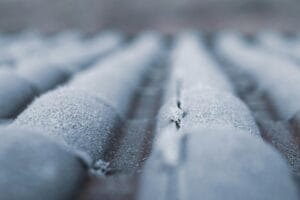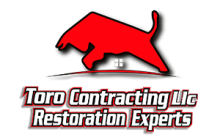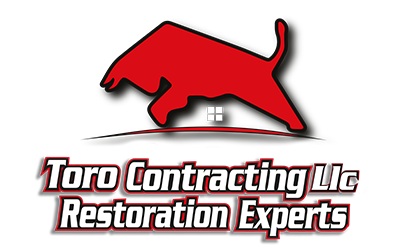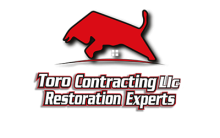Your roof likely needs repair or replacement if you notice: aging beyond warranty limits, curling or missing shingles, water stains on ceilings, sagging roof sections, excessive granule loss in gutters, unexplained energy bill increases, or widespread moss/algae growth. These warning signs indicate compromised structural integrity that can lead to costly interior damage if left unaddressed. Understanding these critical indicators helps you make timely decisions about your home’s most important protective barrier.
Key Takeaways
- Widespread granule loss in gutters and bald shingles indicate advanced deterioration requiring replacement rather than repair.
- Water stains on ceilings or walls signal active leaks that may need immediate replacement if structural damage is present.
- Multiple curling, buckling, or missing shingles across large sections suggest system-wide failure requiring replacement.
- Age beyond 20-25 years for asphalt shingles often warrants replacement, especially with concurrent damage symptoms.
- Significant increases in energy bills combined with indoor temperature fluctuations suggest compromised roof integrity requiring thorough assessment.
Age and Warranty Status of Your Roof
Two critical factors determine whether your roof needs repair or replacement: its age and warranty status. Most asphalt shingle roofs have a typical roof lifespan of 20-25 years, while metal roofs can last 40-70 years. Check your installation documentation to confirm your roof’s expected longevity based on its material.
Examine your warranty coverage details carefully. Manufacturer warranties often distinguish between material defects and installation issues. If your roof is nearing the end of its warranty period but showing minimal damage, repairs might suffice. However, if you’re experiencing multiple issues on an aging roof, replacement is usually more cost-effective.
Always document when your roof was installed and maintain records of any repairs to validate warranty claims. Understanding these factors helps you make informed decisions before significant damage occurs.
Visible Shingle Deterioration and Missing Pieces
Physical damage to your roof’s shingles serves as a clear warning sign that action is needed. When inspecting your roof, look for shingle color changes—particularly patches that appear darker or inconsistent with the surrounding areas, as this indicates water absorption and deterioration.
Check for curling or buckling shingles, which expose your roof to moisture infiltration. Roof surface cracks, especially those running across multiple shingles, suggest weather damage that compromises structural integrity. Missing granules that collect in gutters also signal advanced wear.
If you notice bare spots where shingles have completely detached, immediate repair is necessary to prevent water damage. Keep in mind that deterioration patterns often indicate whether spot repairs will suffice or if a full replacement is your most cost-effective solution long-term.
Water Stains and Interior Leakage
Water stains on your ceiling often reveal distinct discoloration patterns that indicate ongoing roof leaks requiring immediate attention. You’ll need to trace these moisture sources by examining where water travels from the roof breach to the visible interior damage, often following structural elements. Conducting a thorough attic inspection allows you to identify entry points, damaged insulation, and mold growth before these issues compromise your home’s structural integrity.
Ceiling Discoloration Patterns
When examining your ceiling for signs of roof damage, discoloration patterns often provide the first visible indication of leakage problems. Different patterns suggest various issues: concentrated brown spots typically indicate a direct leak, while spider-like discoloration points to water spreading across your ceiling structure.
Pay attention to ceiling cracks accompanying these stains, as they often develop when moisture compromises structural integrity. Texture changes, such as bubbling paint or sagging drywall, signal advanced water damage requiring immediate attention.
Fresh stains appear darker with defined edges, while older damage shows lighter coloration with fuzzy boundaries. Track these patterns over time—expanding discoloration suggests an active leak, while stable patterns may indicate a resolved issue. Document these changes with photos to help roofing professionals assess the severity and source of your roof problems.
Tracking Moisture Sources
Locating the exact source of roof leaks requires systematic investigation, as water often travels far from its entry point before becoming visible inside your home. Begin moisture detection by examining your attic during daylight, looking for water stains, dampness, or mold on rafters and decking.
For leak identification in finished attics, use a moisture meter to scan ceilings and walls where discoloration appears. You’ll need to trace stains upward to find the entry point. During dry weather, have someone spray water on different roof sections while you monitor the interior for new moisture.
Check flashing around chimneys, vents, and valleys first, as these are common trouble spots. Keep in mind that condensation from poor ventilation can mimic leak symptoms, so confirm the source before assuming roof damage.
Attic Inspection Essentials
Three critical signs reveal roof problems during attic inspections: discolored insulation, darkened wood structures, and musty odors. When examining your attic, bring a flashlight and check insulation for dampness or discoloration, which indicates water penetration. Pay particular attention to areas around chimneys, vents, and where roof planes meet.
Poor attic ventilation accelerates deterioration, causing trapped moisture to condense on roof sheathing and framing. This compromises insulation effectiveness and creates ideal conditions for mold growth. Examine roof sheathing for water stains, which appear as dark streaks or patches.
You should also inspect during or immediately after rainfall when leaks are most visible. Document any findings with photos to share with roofing professionals, as water often travels from entry points, making source identification challenging.

Sagging Roof Deck or Structural Deformation
A visible depression or warping in your roof’s surface indicates serious structural compromises that demand immediate attention. When conducting roof deck inspections, look for uneven planes or dipping sections that suggest the underlying structure has weakened.
Structural integrity issues typically stem from prolonged moisture exposure or excessive weight loads. Don’t ignore these warning signs – they almost always worsen without intervention.
| Warning Sign | Likely Cause | Action Required |
|---|---|---|
| Center sagging | Rafter damage | Immediate structural assessment |
| Localized dips | Water damage | Moisture source identification |
| Visible warping | Age-related deterioration | Professional evaluation |
Early detection through regular inspections can prevent catastrophic failure. Check your attic ceiling for corresponding interior signs like cracked joists or compressed insulation, which often accompany exterior sagging. These structural abnormalities rarely resolve without professional intervention.
Excessive Granule Loss in Gutters
Excessive granule accumulation in your gutters indicates your shingles are losing their protective mineral coating, which directly compromises your roof’s weather resistance. As asphalt shingles age, they shed increasingly more granules, leaving the underlying material vulnerable to UV damage and water infiltration. You’ll need to inspect your gutters regularly for these telltale granules, as significant accumulation signals your roof’s deteriorating condition and potential need for replacement.
Compromised Weather Protection
When you notice dark, sand-like particles accumulating in your gutters, you’re likely witnessing a critical warning sign of roof deterioration. These granules serve as your roof’s first line of defense against harsh weather conditions and UV radiation. As they wash away, your home’s weather sealing becomes compromised.
Look for these telltale indicators of diminishing protection:
- Water stains appearing on your ceiling after rainfall
- Visible patches of missing granules creating darker spots on your shingles
- Increased interior temperature as UV protection diminishes
- Signs of storm damage like curling shingles or exposed substrate
Don’t underestimate granule loss—it accelerates your roof’s aging process exponentially. Without this protective layer, your shingles become brittle, crack more easily, and lose their ability to repel water efficiently.
Aging Shingle Symptoms
Shingles naturally deteriorate as they age, manifesting several distinct symptoms beyond just granule loss. You’ll notice curling edges, buckling sections, and brittle textures that crack easily when touched. These indicators suggest your shingles are approaching the end of their functional shingle lifespan, typically 15-25 years depending on material quality and climate exposure.
Check your gutters after rainstorms—excessive granule accumulation resembling coarse black sand signals advanced deterioration. This protective layer shields against UV damage, and its depletion accelerates roof failure. Addressing these symptoms promptly can limit repair costs, whereas ignoring them often leads to more extensive damage requiring complete replacement. Professional inspection can determine whether targeted repairs will suffice or if the deterioration warrants a full roof replacement based on the severity and distribution of aging symptoms.
Rising Energy Bills and Poor Temperature Control
Your energy bills may signal more than just increased usage; they often reveal compromised roof integrity. When your roof’s insulation quality deteriorates, your home’s energy efficiency plummets, forcing HVAC systems to work overtime.
Look for these warning signs:
- Sudden increases in heating or cooling costs despite consistent usage patterns
- Difficulty maintaining comfortable temperatures in upstairs rooms or attic spaces
- Noticeable temperature fluctuations between different areas of your home
- Excessive ice dam formation in winter due to escaping heat
Professional roofers can perform thermal imaging to identify insulation gaps and air leakage points. Addressing these issues promptly not only improves comfort but can reduce energy consumption by 15-30%, potentially paying for itself through utility savings within a few years.
Widespread Moss, Algae, or Mold Growth
Although often dismissed as merely cosmetic issues, widespread growth of moss, algae, or mold on your roof indicates potentially serious underlying problems. These organisms retain moisture against your roofing materials, accelerating deterioration and potentially compromising structural integrity.
When you notice green or black patches spreading across your shingles, immediate moss removal is essential. Left untreated, these growths can lift shingles, create water entry points, and reduce your roof’s lifespan by years. Professional assessment will determine whether cleaning and treatment suffice or if damaged sections require replacement.
For long-term algae prevention, consider installing zinc or copper strips along your roof ridge. The metallic runoff creates an environment hostile to biological growth. Regular maintenance, proper ventilation, and trimming overhanging branches also help prevent recurrence of these damaging organisms.
Frequently Asked Questions
How Long Does a Typical Roof Repair or Replacement Take?
Your roofing timeline varies significantly by project scope. Typical repairs take 1-2 days, while full replacements require 2-5 days for average homes. Your project duration depends on several factors: roof size, material type, weather conditions, and complexity. Asphalt shingles install faster than metal or tile options. You’ll need to add extra time if your contractor discovers structural damage during the process. Always build flexibility into your schedule for unexpected challenges.
Can I Stay in My Home During Roof Replacement?
Yes, you can stay in your home during roof replacement, but consider the practicalities. Most contractors complete residential projects in 1-3 days, making temporary accommodations unnecessary. However, be prepared for significant noise levels throughout the workday. If you work from home or have small children, you might prefer staying elsewhere. Contractors will protect your property with tarps and clean up daily, but expect some disruption to your normal routine during the replacement process.
Will My Homeowner’s Insurance Cover a Roof Replacement?
Your homeowner’s insurance may cover roof replacement depending on what caused the damage. Most policies cover unexpected events like storms or fires, but not wear and tear or aging. To determine your insurance coverage, document the damage with photos, review your policy details, and contact your insurer to start the claim process. An adjuster will assess the damage to determine if it’s covered and how much the insurance will pay.
How Much Does Roof Repair Versus Replacement Typically Cost?
“A stitch in time saves nine” perfectly illustrates roof costs. You’ll typically spend $300-$1,500 for repair costs addressing isolated damage, while full replacement expenses range from $5,000-$25,000 depending on your home’s size, roof material, and labor rates. Repairs make sense for localized issues, but if your roof exceeds 20 years or shows widespread deterioration, replacement offers better long-term value despite higher upfront investment. Consider obtaining 3-5 contractor estimates for accurate pricing.
What Roofing Material Offers the Best Value for My Climate?
The best roofing material for your climate depends on local weather patterns. In high-temperature regions, metal roofing advantages include exceptional durability and heat reflection, potentially reducing cooling costs by 25%. For moderate climates, asphalt shingles durability offers 20-30 years of protection at a lower initial cost. Consider your area’s temperature fluctuations, precipitation levels, and wind exposure when choosing. You’ll need to balance upfront investment against long-term performance specific to your regional conditions.






